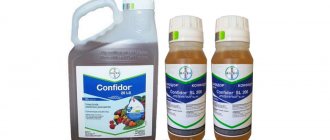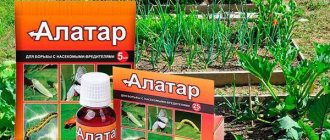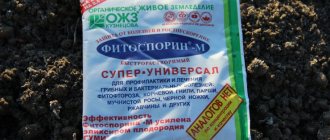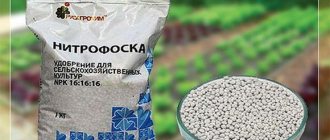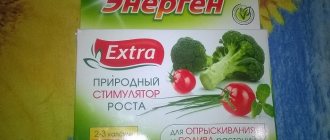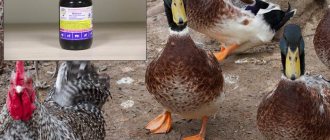Selective advances in breeding poultry breeds have increased the yield of meat and eggs. If previously a chicken laid eggs every two to three days, now this figure has increased to daily laying. At the same time as high productivity, the bird has become “lazy” and shows almost no interest in procreation. Laying hens refuse to hatch eggs. Incubators come to the rescue, bringing the conditions for hatching young birds as close as possible to natural ones. We offer an instruction manual and a detailed review of the “Ideal Hen” incubator.
Incubator “Ideal hen”
What is an incubator
“Ideal hen” is designed for breeding young chickens, geese, ducks, quails, pigeons and any other bird with medium and small egg sizes. The device copes with the work of 2-3 hens or more, the largest of which are capable of hatching a maximum of 15 eggs. The incubator can also be used as a jigging box for hatched chicks, where they dry out and are kept in the first days of life at a consistently comfortable temperature.
Healthy offspring obtained in an incubator
The design of the “Nedka” is designed for an inexperienced user and is extremely simple. The body is made of polystyrene foam, which has optimal thermal insulation characteristics for incubation. At the bottom there are cells for water to regulate humidity; on top they are covered with a plastic mat-backing. The ventilation system is represented by small holes in the bottom and lid of the incubator.
Equipment for the “Ideal Hen” incubator
The lid contains heating elements, a thermostat and a thermostat. There are viewing windows and a digital monochrome display that displays the current temperature. Budget models of the “Ideal Hen” do not have an electric drive for the rotary device and an egg grill, but if desired, they can be purchased separately. There are grilles specifically for goose eggs for 40 pcs and quail eggs for 143 pcs.
Electrically driven rotating mechanism for the “Ideal Hen” incubator
The turning of the eggs is carried out either manually or mechanically, using linear movement of the grid along the mat-substrate. If there is an electric drive, eggs are rolled automatically every 4 hours.
Appearance of the “Ideal Hen” incubator
The “Ideal Hen” incubator range includes devices for 35, 63(90), 104(150) chicken-sized eggs. The values indicated in parentheses are when laying eggs without a grid, with manual turning. The maximum power consumption for the smallest model is 35 W (for the entire incubation period of chicken eggs 18 kW). The largest model without electric drive has 100 W (or 50 kW per incubation). Prices for the “Ideal Hen” are more than liberal and start from 2.3 thousand rubles for a device with manual rotation for 90 eggs.
Comparative characteristics of the “Ideal Hen” incubator models
Instructions
Strict adherence to incubation instructions allows you to obtain a 100% hatch with high-quality eggs. In the future, a small loss of chicks of the Phoenix and Bielefelder breeds, as well as other breeds, is allowed, which is the norm. An instruction manual is included with each device. The equipment of the device and its functionality should be checked upon purchase.
Preparing for work
If the air humidity in the room with the incubator is high, then it is enough to pour water only into 2 recesses that are located in the bottom. They must be chosen correctly: they must be equally distant from the heaters and located symmetrically. When the humidity is low, you need to pour water into all the depressions at the bottom.
To prevent the water in the incubator from blooming, you must use only boiled water. There will be no difference for the development of eggs, but bacteria and algae will not be able to develop in it.
After filling the containers with water, a plastic grid-mat is installed. Next, a mesh is placed to turn the eggs and connected to a device for movement. Next, the entire structure is covered with a lid and plugged into an outlet. The turning device comes into action after 5 seconds and moves the grate. Then it goes into a waiting state for 4 hours.
The thermostat that hangs from the lid must be straightened. After the eggs are laid, he can touch the one located below him. However, to obtain accurate data on the temperature in the incubator, you will need to place a thermometer on the eggs in the morning and evening. Overheating eggs poses a serious danger. Immediately before laying them, it is necessary to warm up the incubator. It is also necessary to adjust the sensor readings so that the inside temperature is 38.2 ° C. During the first week of incubation, the eggs should be at this temperature.
Snail - appearance, place of residence, food, domestic species + 100 photos
When removing the cover, the thermostat must be turned off so that the heating element does not rupture due to a sharp temperature change.
Laying eggs
To incubate quail eggs of the Pharaoh, English Black and other breeds, eggs are laid no older than 10 days. Ideally, they should not be older than 5 days. Eggs sold in stores are not suitable for incubation, since they are usually not fertilized.
Material for incubation is selected that is homogeneous and without damage to the shell. When viewed on an ovoscope, all defects are immediately visible. The air chamber, medium in size, should be located at the blunt end of the egg. They cannot be washed, as this will wash away the natural protective film. This material will tell you about the Wyandotte chicken breed.
In order to control the revolution, they write a date on one side of the shell with a pencil or simply put a mark. The incubation material is laid upward with this sign. Next, after turning, you need to check that all the eggs are shifted sideways by 90 degrees.
If the egg is slightly damaged during incubation and there is a crack or dent in the shell (but the white does not leak out), it can be saved by sealing the broken area with tape, which is removed the day before hatching. Do not wrap the entire egg with sticky tape.
Who produces the “Ideal Hen” and what makes it unique
The incubators are manufactured by the research and production company Bagan from Novosibirsk (legal name Smart LLC). The company specializes in the development and production of safe infrared heaters and thermal stabilization systems. The company launched its first household incubators in 1991, which indicates serious experience in this area.
Logo
The uniqueness of the incubators of the “Ideal Hen” line and the main difference from similar devices from other manufacturers is that the heating element is a distributed electric heater made of composite material. This is an infrared low temperature heater in the form of a plate. It is fireproof, does not ignite or burn. The REN technology is Bagan’s own development, patented in Russia and has no analogues abroad.
Patented plates of the REN IR heater made of composite materials used in the “Ideal Hen” incubator
Unlike high-temperature IR emitters, the heater does not burn or blind. Does not dry out the air, is safe for biological objects, does not use oxygen during the heating process. It is permissible to operate heating elements in a humid environment and at negative temperatures. The accuracy of measuring and maintaining temperature in the “Ideal Hen” incubators is ±0.1°C.
Certificate of Compliance with Safety Requirements for “Ideal Hen” Incubators
The company makes a good impression and does not ignore both negative and positive reviews about its products. In addition, the manufacturer does not use dishonest advertising techniques and does not mislead customers. The Bagan company openly states that the “Ideal Hen” incubator is far from perfect and has its drawbacks. All of them are taken into account and gradually eliminated, as evidenced by the birth of new modifications of the “Ideal Hen”.
Prices for popular models of egg incubators “Ideal hen”
Egg incubators Ideal hen
Advantages of an incubator
The undoubted advantages of the “Ideal Hen” include:
- Low price. Despite the low cost of the unit, it confidently copes with the main task of artificially breeding birds. With him, there is no need to run around the hen waiting for the manifestation of maternal feelings and the desire to hatch offspring. If the quality of the starting material for laying the incubator is good and the required temperature, humidity conditions, and optimal air exchange are observed, the hatching percentage reaches 100%. The device quickly pays for itself – after just 1-2 outputs.
- Simplicity. The absence of complex electronics can be attributed to the advantages of the model. There is no need to make fine adjustments here, looking every now and then for hints in the instructions. All manipulations boil down to connecting to the network and setting the desired temperature.
- Reliability , which naturally follows from the simplicity of the device design. According to reviews from users of the “Ideal Hen” incubator, the device has been operating successfully for at least 6 years. In this case, the heating function does not deteriorate, and the rotating device does not fail. The only problem that occurs after such a long period of time is a malfunction of the temperature display. The numbers are not viewed in their entirety. The display can be replaced, because All spare parts for incubators are available for sale.
- Safety of heating elements. Unlike metal heating elements, the REN composite panel evenly distributes heat and heats not air, but a living object using infrared radiation. It does not glow when heated like metal. The chicks hatched from the eggs are not burned by the heating elements, and you can leave them to dry directly in the incubator.
- Long warranty with responsive support. The manufacturer guarantees uninterrupted service of the incubator for 2 years. During the non-incubation season, it holds promotions and adds another 6 months to this period. If any part fails during the warranty period, the Bagan company will replace the non-working element with a new one without unnecessary proceedings.
Despite the low cost of the unit, it confidently copes with the main task of artificially breeding poultry
Disadvantages of the “Perfect Hen”
According to user reviews, the shortcomings of the incubator boil down to the following:
- No plastic tray. The foam bottom with embossed cells under water quickly becomes dirty and is difficult to clean. Over time, the internal surfaces of the incubator acquire an unaesthetic appearance.
- Temperature spread in the center and along the edges of the incubator is up to 1.5°C. This is also the case with other brands of incubators that are not equipped with a fan. Therefore, the instructions for the devices say that the eggs need to be swapped periodically. Those on the edges should be moved to the middle, and the central ones to the walls of the case.
- The need to re-set the temperature during power surges in the network. The shortcoming is corrected by connecting the device through a voltage stabilizer.
- There is no possibility of connecting to a 12 V battery in early models of the “Ideal Hen”, which can lead to the death of embryos during a long-term power outage.
- Poor ventilation through openings in the housing. The absence of a fan adversely affects the free circulation of air in the incubator. The lack of oxygen has a particularly strong effect at the time of pipping of chicks, which can develop hypoxia. For better air flow in the “Ideal Hen” incubator, you have to briefly open the lid 1-2 times a day for ventilation.
- Low humidity. Since there is no humidity level sensor in the “Ideal Hen” models until 2021, users are faced with difficulty in adjusting it. It is not clear how much water should be poured into the cells at the bottom. Geese and ducks, as well as other poultry, require high humidity during the pecking period. It is recommended to spray the eggs during the last incubation period with warm water from a spray bottle 1-2 times a day.
Temperature spread in the center and along the edges of the incubator is up to 1.5°C
Review of the new “Ideal Hen” model 2021
The Bagan company launched in 2021 the 4th generation of the “Ideal Hen” incubator on the “Smart Hen” controller. The manufacturer tried to take into account the shortcomings of previous versions and made appropriate design changes. The capacity of the improved incubator is 63 and 104 eggs, the price of the model starts from 6.3 thousand rubles. What changed?
- Added plastic removable tray.
- A fan appeared.
- Improved resistance to network interference.
- The possibility of power supply from a 12 V network has been implemented.
- The incubator is equipped with a humidity sensor.
- The rotary mechanism is now controlled by a controller, connected to it using a plug.
- LED lighting appeared inside the case with a separate power button.
- It is possible to fine-tune parameters thanks to the new Smart Hen processor. The time and date are set and counted from the laying of the eggs. Several automatic modes – “goose”, “quail”, “duck” and others. The system independently sets and controls the temperature according to the days of incubation and the type of bird, stops turning and cools the eggs in the last days of the incubation period. There is a manual mode in which you can set the temperature, the number of egg turns per day, and turn on/off an alert signal when deviating from the set mode. The display shows information about humidity, temperature, date and time, and the selected mode.
Appearance of the 2021 release “Ideal Hen” incubator on the “Smart Hen” controller
Prices for popular models of egg incubators “Smart Hen”
Egg incubators Smart hen
Video - Comparison of the “Ideal Hen” with the “Smart Hen”
Technical characteristics of the incubator and manufacturer
Serial production of these devices was launched back in 1998 in Novosibirsk. At the moment, the “Ideal Hen” incubator is produced there by the company “Bagan” LLC.
The device is commercially produced in several versions: mainly for 35 eggs, for 90 eggs and for 104 eggs; reviews about them are generally positive (for more details, see the corresponding section). The factory comes with the appropriate marking, for example, 63 eggs 220/12 V, which means that this model is designed for incubating 63 chicken eggs, can operate from a regular 220 V power supply, as well as from an autonomous 12 V battery.
Description of Ajax cucumbers, characteristics of the variety and cultivation
The technical characteristics of the device are presented in the table.
The picture shows a table with the main characteristics of the Ideal Hen incubator.
Comparison of the model with popular brands of household incubators
Comparative characteristics of the “Ideal Hen” incubator with domestic brands of a similar price category.
| Parameter | Ideal hen IB2NB | Laying hen BI-1 | Cinderella |
| Number of loaded chicken eggs, pcs | 63 (90) | 63 | 70 |
| Price, rub | 2800* | 3600* | 3400* |
| Availability of grille included | + | + | + |
| Thermostat | digital | digital | — |
| A heating element | Infrared low-temperature plates (RF patent) | Metal flat heating elements | Metal flat heating elements with water tanks |
| Temperature range, °C | 36-39,9 | 33-43 | 32-42 |
| Accuracy of temperature maintenance during thermal stabilization, °C | 0,1 | 0,2 | 0,2 |
| Temperature spread in the incubator, no more, °C | 1 | 1 | 1 |
| Power consumption, W | 60 | 40 | 50 |
| Humidity level indicator | — | — | — |
| Availability of a fan | — | — | — |
| Automatic humidity level adjustment | — | — | — |
| Possibility of power supply from 12 V network | + | + | + |
| Automatic rotating device | not provided, additional option for 1035* rub. | + | + |
| viewing window | + | + | + |
| Removable tray | + | — | + |
| Housing material | expanded polystyrene | expanded polystyrene | expanded polystyrene |
| Guarantee period | 2 years + 6 months** | 2 years | 1 year |
* — Average market prices in the Moscow metropolitan region as of July 2021.
** — Manufacturer's promotion.
Prices for popular models of egg incubators
Egg incubators
Manual
General recommendations
Select clean, undamaged, medium-sized eggs that are no more than 10 days old. Too large ones may have two yolks, and small ones will produce weak offspring. Buy hatching eggs from trusted sellers. It is advisable to look at the breeding stock of the bird and the conditions under which it is kept. Make sure that the farm breeds birds from at least two different families.
Well-groomed and healthy stock of breeding hens in a well-equipped chicken coop
During the initial period of incubation, the eggs should not be allowed to overheat. Even a short increase in temperature to 39.5°C leads to massive death of embryos due to vascular rupture and hemorrhage. It is important in which room the incubator is located. The ambient temperature should be in the range of 20-25°C, a decrease to 15°C or an increase to 35°C are critical.
Death of embryos and deformities of birds due to overheating during the initial incubation period
Do not install the device on the floor or in direct sunlight. If there is a power outage for up to 5 hours, cover the device with warm clothes to prevent hypothermia. For longer outages, alternative methods of heating eggs must be provided. For example, bottles of heated water.
A method for heating eggs with water bottles during a temporary lack of electricity
On days 9-10, inspect the eggs using an ovoscope or through a bright light source. Unfertilized eggs are transparent. Such specimens must be removed from the incubator to prevent rotting and bacterial contamination of full-fledged eggs.
Chicken eggs in an ovoscope from 3-19 days of incubation
Prices for an ovoscope for diagnosing eggs
Ovoscope
If the chicks begin to hatch before the end of the incubation period, reduce the temperature in the incubator during subsequent hatching by half a degree. If pipping occurs later, raise it by the same amount.
The absence of turns in the initial stage of incubation threatens with abnormal development and congenital deformities. The break between turns should not exceed 8 hours, the optimal frequency is every 3-4 hours. During the last week of incubation, turning should be stopped. To control, mark the opposite walls of the egg with a soft pencil, for example, with the symbols “X” and “O”. Also rotate the eggs daily - moving the outer ones to the center, and vice versa.
Marking eggs to ensure regular turning
With insufficient air exchange, disturbances in the development of the embryo are also observed, including suffocation. If the room is stuffy, then expand the diameter of the ventilation holes. Do not allow them to be covered with foreign objects or clogged with dust. For models not equipped with a fan, it is recommended to open the lid for 10-15 minutes 1-2 times a day for ventilation.
Method for increasing humidity in an incubator
Lack or excess of moisture also leads to undesirable consequences. Too high a level in the middle of incubation leads to the birth of weak, underdeveloped chicks. Humidity is adjusted with warm water poured into the cells at the bottom of the case. During the initial period, it is advisable to additionally sprinkle goose and duck eggs with warm water 1-2 times a day. The same procedure is carried out for all types of birds at the beginning of pecking.
Incubation of broiler eggs at home.
The process of breeding broilers is quite a difficult task. A well-known method that will ensure the breeding of birds is the incubation of broiler eggs at home. To obtain the maximum yield of chickens, there are certain rules and recommendations, which you will find in our article.
Preparing to lay eggs
| Step | Description |
| 1 | Assemble the device according to the instructions. Place on a flat surface, leaving a gap between the bottom of the appliance to allow air to enter through the ventilation holes. |
| 2 | Pour water heated to 35°C into the reservoirs at the bottom of the housing. If the room is humid, fill 2 cells, if dry, then fill 4. |
| 3 | Place a plastic mat on top. |
| 4 | If you have a grill, place it on the base. Move it around and make sure that nothing is blocking its movement across the surface. |
| 5 | Adjust the position of the temperature sensor wire. It should hang vertically to the uppermost level of the eggs. It is allowed to touch the egg. |
| 6 | Close the lid and turn on the device, and also connect the electric drive, if provided in the kit. |
| 7 | Set the temperature on the thermostat. For chicken eggs this value is 37.9°C on the first day. |
| 8 | After thermal stabilization (about 30 minutes) and reaching the desired temperature, turn off the device and carefully lay out the eggs, which have naturally warmed up to room temperature. |
| 9 | Close the lid and turn on the device. Next, you need to control humidity, temperature and monitor the turning of the eggs. |
Preparing to lay eggs in the “Ideal Hen” incubator
Selecting the temperature in the “Ideal Hen” incubator
Laying eggs in the “Ideal Hen” incubator
Breeding chicks using an incubator
Correct selection of eggs plays an important role when hatching chicks using an incubator. They must have a uniform shell without cracks, dirt, or unevenness of the shell and be no older than 10 days.
Non-viable eggs remain light-colored. At seven to eight days, the embryo is visible as a dark spot.
Before laying, marks are made on the sides of the eggs with different markers for easy control of the revolution. Constant turning is necessary for uniform heating and embryo formation. If you need to manually turn the eggs, you must turn off the power to the incubator. The procedure must be repeated three to five times a day, with a maximum interval between revolutions of eight hours. Automatic models, designed for 63 and 100 eggs, turn the eggs six times a day. Regardless of the egg turning system, they must be swapped once a day. Those that were in the center are transferred to the edge of the incubator, and those that were on the edges are placed in the center. This is necessary to heat all the eggs evenly. Only 7 days before the chicks hatch, the eggs stop turning.
If there is no electricity for more than 4-5 hours, the incubator is moved to a warm place. To keep the inside warm, you can cover the incubator with blankets or pillows. If the room temperature is less than +16 degrees, the ventilation openings should be closed.
Depending on the type of eggs, the incubation period is:
- 21 days for chicken eggs;
- 28 -30 days for duck and goose;
- 14 days for pigeons;
- 18 days for budgerigar eggs;
- 23 days for pheasant eggs;
- 30-37 days for swan eggs;
- 32-35 days for Muscovy ducks;
- 17 days for quail eggs.
If the chicks hatch a day earlier, the temperature is reduced by half a degree; if the chicks do not begin to hatch at the appointed time, the temperature is increased. Typically, chicks peck at the shell in the blunt area of the egg. Only hatched chicks need to be examined - their tummies should be soft and their umbilical rings should be healed.
If the temperature regime was disturbed during the incubation process and the eggs overheated, the chicks will have a yellow umbilical cord and may hatch dirty.
Low humidity in the second half of the incubation period leads to chicks pipping in the central part of the testicle. This leads to health problems: a tight tummy and weak legs. Low temperature leads to disruption of the development of internal organs and the green color of the umbilical cord.
The hatched chicks are removed from the incubator and placed in a box. Chicks need warmth, so care should be taken to heat them with electric lamps or a special heater. After all the chickens have hatched, the incubator is unplugged and washed with water and detergent. The lid can be wiped with a damp cloth. Instructions for use strictly prohibit the use of chlorine-containing cleaning products.
Payback period for the “Ideal hen” incubator
Calculation of the cost of one head of chicken of the highly productive German egg-meat breed Bielefelder in an incubator with a mechanical turn for 63 eggs.
Cost calculation.
| Name | Amount, rub* |
| Incubator “Ideal hen” IB2NB-1C for 63 eggs | 2400 |
| Electricity 30 kW (incubation period 21 days) | 162 |
| Hatching eggs, 63 pcs (150* rub/pc) | 9450 |
| Total | 12012 |
Hatching chickens from 63 eggs.
| Loss percentage | Number, goals |
| Unfertilized eggs, 20%** | 13 |
| Dead embryos before 7 days of development, 2%** | (63 – 13) x 0.02 = 1 |
| Suffocation at hatching, 4%** | (63 – 13 – 1) x 0.04 = 2 |
| Hatching in an incubator subject to temperature and humidity conditions, sufficient ventilation, 100% | 63 – 13 – 1 – 2 = 47 |
| Cost of a chicken at the first laying of eggs, rub. | 12012 / 47 = 256 |
* — Tariffs and average market prices of the Moscow metropolitan region as of July 2021 were taken into account in the calculation.
** — Average statistical data. With good or poor quality, hatching eggs can deviate both downward and upward.
Conclusion: with the market price of Bielefelder chickens up to 5 days of life at 350-500* rubles per head, the “Ideal Hen” incubator for 63 eggs pays for itself at the first laying. The cost of one head of Bielefelder chicken for the second laying with a purchased hatching egg will be 205 rubles.
How to lay incubation material
Like any other incubator, fresh eggs are placed in these models (no more than ten days from the date of collection). They must be clean and fertilized (the last point is checked using an ovoscope). Products are stored at a temperature of +10°C. Before laying eggs, they need to be warmed to room temperature by simply moving them to a warmer place.
Laying eggs
The incubation material must be homogeneous and of average size (within a particular breed). There should be no cracks, chips, or growths on the shell. As for the air chamber, it should be medium, round and located where the blunt end of the egg is.
It is recommended to mark all eggs on one side (put any sign convenient for the farmer). With the help of this trick it is easier to control the performance of the rotating mechanism.
Method for determining humidity using two thermometers
Since “Ideal Hen” incubator models produced before 2021 are not equipped with a humidity level sensor, we offer an old, proven and accurate way to measure it using improvised means. To do this you will need:
| Step | Description |
| 1 | Turn on the incubator, pour warm water into the bottom or tray containers and wait for the temperature to stabilize. This process usually takes 30 minutes. |
| 2 | Take two identical thermometers. |
| 3 | Wrap one of them with moistened cotton wool (settled and clean water at room temperature) according to the level of the measuring liquid. |
| 4 | Place both thermometers in the incubator, at a close distance from each other and at the same level. |
| 5 | Turn on the incubator, and no earlier than 15 minutes, but before the moistened cotton wool dries, take out thermometers and note the temperature values. |
| 6 | Use the data from the psychrometric table to determine the humidity level in the incubator. |
Table for determining the humidity level in the “Ideal Hen” incubator
conclusions
- “The Ideal Hen” is an inexpensive and easy-to-use incubator, with a warranty of more than one year.
- The device is designed for breeding chicks of various birds.
- Choosing a model with a rotating device greatly simplifies the incubation process.
- To obtain high-quality chicks, you must follow the recommendations given in the instructions.
- Maintaining the required temperature parameters is necessary for the full development of embryos.
Find out how to make an ovoscope with your own hands here.
